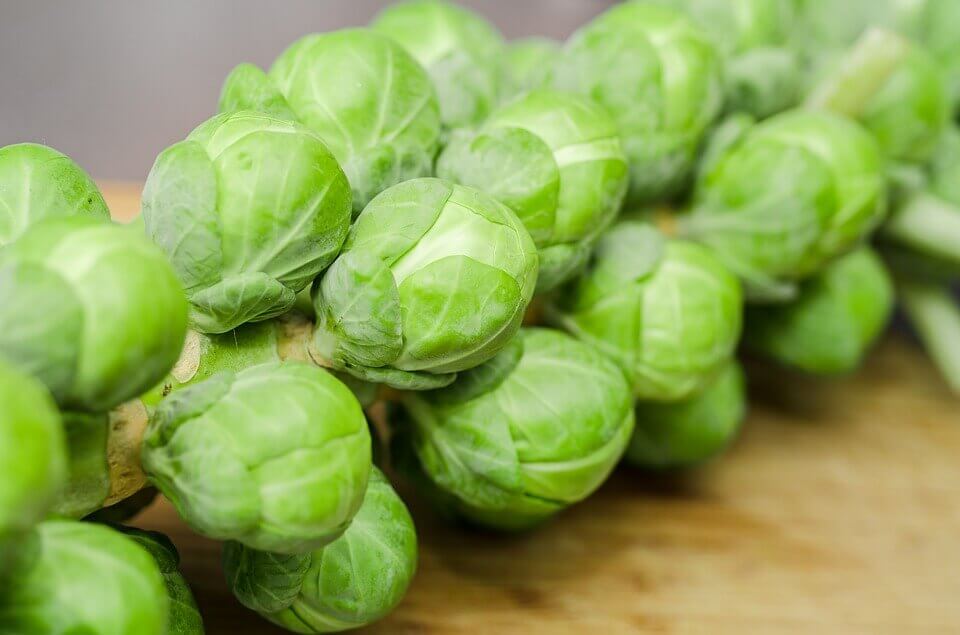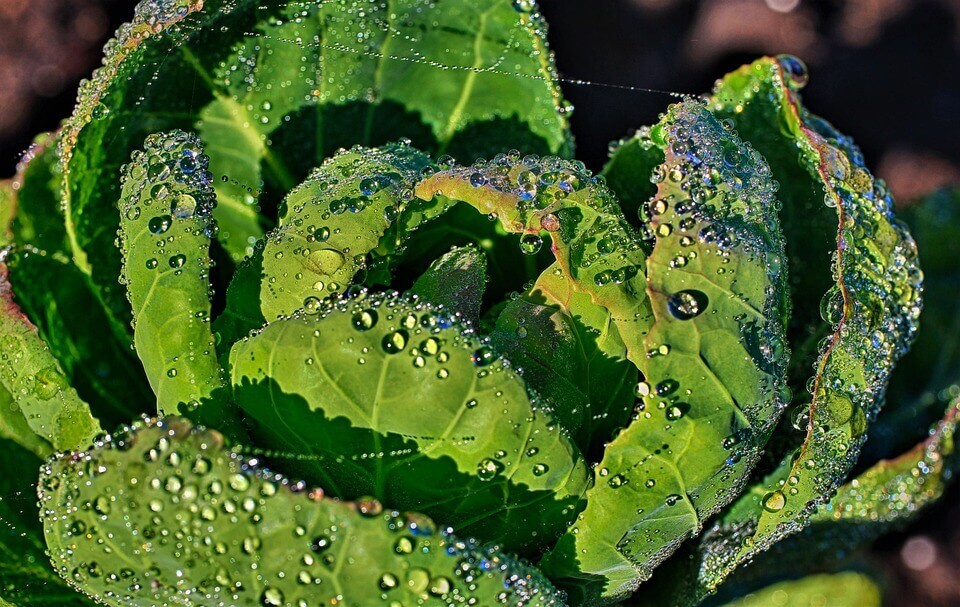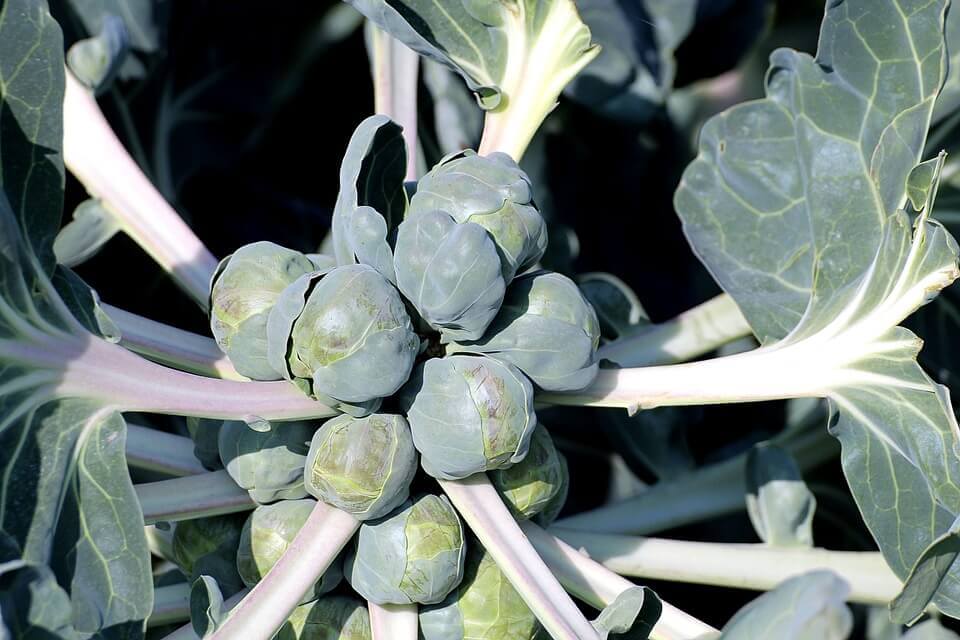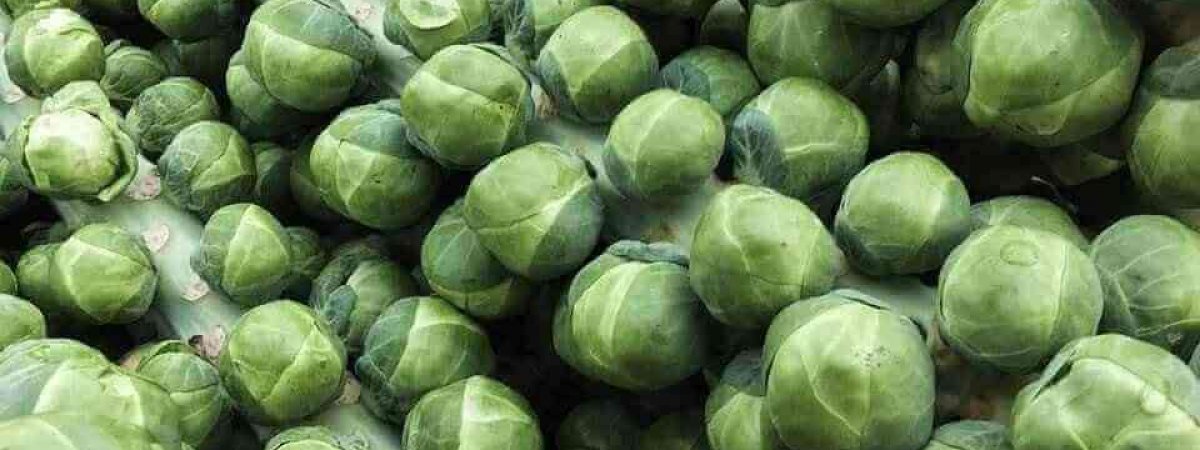Brussels sprouts originated centuries ago in Ancient Rome, and are named after the city of Brussels in Belgium.
The vegetable has been in the gardens since the 14th century as a part of the cabbage family.
One can grow brussels sprouts in their home garden easily, but patience is the key. These are slow-growing plants that need a stretched growing season.
If you want to know how to grow brussels sprouts, we have got your back mate!
Here’s an informative blog with all the information about the tasty vegetable – planting, caring, harvesting, and more.
How to Grow Brussels Sprouts?
The appealing appearance of brussels sprouts is enough to convince passionate gardeners to grow it in their home garden. Do you feel us? If you do, we don’t need to make you believe the wonders of having the mini cabbage heads at home.
These are 30-inch tall stalks with broad leaves and jutting stems. Brussels sprouts, like various other vegetables from the Brassicaceae family, taste amazing when subjected to cold weather.

The right time to plant brussels sprouts
The best time to plant brussels sprouts is during winter as it enjoys cool weather.
They start sprouting from the seed at a temperature range of 45-80 degrees. As you already know, these cruciferous vegetables take longer to grow, so it is better to get a growth breakthrough by using young plants, and not seeds.
If you planned to grow brussels sprouts from seed, sow them directly into your garden in mid-late summer to harvest them during fall.
Plant the young seedlings in the garden two months prior to the first frost. People living in zones 9-10 of the United States can sow seeds or transplant the young plant from October to December.
Gardeners from the cooler regions are free to grow the crop outdoors in spring, soon after the soil is favorable.
Types of brussels sprouts
You can choose from the following varieties of brussels sprouts:
‘Bubbles’ F1 – It takes 85-90 days to mature, and can tolerate drought and heat. This variety grows into 2-inch sprouts resistant to rust and powdery mildew.
‘Long Island Improved’ OP – This one takes 90 days to mature, and is considered as a small yet high-yielding plant that can withstand winds and freezing climate.
‘Jade Cross’ F1 and ‘Jade Cross E’ F1: Both these Hade Cross varieties are compact plants suitable to growing in windy regions.
The maturity of Jade Cross variety is around 90 days. The sprouts of Jade Cross E are comparatively larger than Jade Cross, but both are disease-resistance.
‘Royal Marvel’ F1: With a maturity period of 85 days, Royal Marvel is a productive plant type that stays resistant to tip burn and bottom rot.
‘Oliver’ F1: This one is an early producer with a maturity period of 85 days, with an inch of sprouts. It is easy to pick and remains disease-resistant.
‘Rubine’: Rubine is heirloom purple plants maturing over a time of 85-95 days. These are low-yield with good flavor as compared to its green varieties.
Sowing brussels sprouts
- Sow your brussels sprouts approximately 4 weeks prior to planting them in Mid-March. You can start by planting a seed in each module of a modular planting tray.
- Put the seed only an inch deep in the planting tray. You should see them germinating in 7-12 days.
- Once the germination is complete, your seedlings are all set for transplantation. You can move them into the garden after four weeks.
- When using a heat tray or a propagator system to support germination, you must ensure to keep an eye if the seedlings turn spindly. Well, they shouldn’t!
- As you see your seedlings appears above the soil surface, pull out the weaker ones and get the healthy-looking seedlings ready for moving to the garden.
Watering brussels sprouts
- You must never leave your seedlings to dry out before the transplanting stage.
- Keep the soil moist all the time by misting them using a spray bottle throughout the germination period.
- As soon as you plant the brussels sprouts in the garden, water them deeply.
- Let the soil dry out fro the nest 2-3 days. Always allow the soil to dry out a little between watering.
- It helps the roots to grow while looking for water in the ground.
- In case you are living in a region with warm weather, keep watering the sprouts every alternate day.
- For gardeners living in colder regions, watering the brussels sprouts twice a week should be sufficient for optimal growth.
Note: Gardeners must ensure to get the right balance while watering brussels sprouts. Over-watering may lead to stunted growth of the seedlings, and also increases the risk of root rot. Overwatering may also result in waterlogging around the plant’s roots. Taking care of plants is very crucial.

Hardening brussels sprouts
If you are starting with your brussels sprouts indoors, you need to provide them some time to adjust to the conditions outdoor.
Check out how you can harden the brussels sprouts:
- Use a propagator or plastic tent.
- Cover the seedling trays to retain humidity and moisture in the surrounding air.
- Do not leave the seedling tray under direct sun, rather place it in a cool and shady area.
- Get the tray inside the house for the night.
- Go on with this process for 10 days.
- Take off the plastic tenting one hour earlier from the tray with each passing day.
- Continue cutting back the time by an hour over the days until you notice the sprouts no more need the assistance of the mini greenhouse or cloche.
Transplanting brussels sprouts
We are almost there! After sowing, watering, hardening, it’s time to learn about the transplanting process for understanding how brussels sprouts are grown.
The plants of brussels sprouts are larger than you may imagine. There are huge root systems that generally spread horizontally.
When going with the taller varieties, you will need to keep a distance of 30 inches between the plants and 30 inches in between rows.
In the case of smaller varieties, 25 inches distance between rows and 25 inches between plants will do.
Here’s how you transplant the seedlings of brussels sprouts into the garden:
- Dig a hole of 1 ft wide and work on the soil.
- Add some compost and perlite to the fresh soil to add nutrients content and providing assistance for water drainage.
- Put the seedling in the middle of the worked soil and tap gently on the soil to clear the air pockets.
- Water the area gently to make the seedling’s root ball recovers successfully from the transplant stress.
Harvesting and storing brussels sprouts
- You will see the brussels sprouts ripening at the stalk’s base.
- Start harvesting at the bottom and work your way to the top of the trunk gently.
- You can also harvest in stages for a few days, ensuring all the sprouts are ready for picking.
- Do not forget to remove the yellow foliage while harvesting to keep away from diseases.
- After you get done with harvesting, do not rinse the sprouts.
- Put them in Ziploc bags and store in one of your fridge’s drawers.
- You can also Blanche Brussels before freezing them if you want to store them for long-term (up to 6 months).
- Post harvesting, either dig up the root or burn it.
- Sending it off to the landfill is also a better idea than adding it to the compost heap.
Taking care of brussels sprouts
Light
The plant grows and sprouts well under full sun and requires a minimum of 6 hours of sunlight throughout the day.
Remember, excess shade makes the maturity process of the sprouts slower.
Soil
Brussels sprouts grow in slightly neutral to acidic soil that is well-drained, fertile, and moist, with sufficient organic matter.
The suitable soil pH is in the range of 6.5 to 7. The adequate organic matter in the soil is what balances the moisture required for sprouts’ intense growth. They like the soil firm, so pat it down gently while planting.
Water
Make sure to keep the soil moist (not soggy) for the proper growth of sprouts. Water them up to 1-1.5inches every week.
Temperature and Humidity
Brussels sprouts love to grow in a temperature range of 45-75 degrees Fahrenheit.
They can tolerate a day or two in freezing climate conditions, and can even get a finer flavor under light frost.
Brussels are not a favorable warm-weather crop. The sprouts maturing in dry and hot weather will taste bitter and will be flimsy.
Fertilizer
You should fertilize brussels sprouts two times in a season using a nitrogen fertilizer.
The first fertilization should take place when the plant grows to a height of 12 inches and again after four weeks.

Pests and diseases affecting brussels sprouts
Brussels sprouts are tough plants, but they can also get affected by pests and infections like several other plants in your garden.
If you are planning to grow brussels sprouts at home, you must know about the diseases and pests that can affect your greens.
Some of the common ones include:
Aphids: Aphids congregate on the stems.
Cabbage root fly: If you find wilting in the plant foliage while pulling it from the ground, chances are you will see white maggots forming a layer around the roots. It is a common issue with the new transplants.
Cutworms and leatherjackets: These are pests living below the soil and emerging at night to feed on the brussels sprouts.
Cabbage caterpillars: These are pests formed by the clusters of eggs the butterflies lay under the leaves. On hatching, the caterpillars from the eggs start sucking the leaf juice.
Clubroot disease: It is a disease that spoils the root system making them woody and thick, destroying the plant. It infects all the surrounding brassicas, and it can live in the soil for up to nine years.
You can control these pests with an organic pesticide, such as neem oil. Simply, spray it on the plants for around 2-3 weeks prior to harvesting the sprouts.
In a Nutshell
Brussels sprouts are healthy vegetables that you can have frequently when grown in your home garden. In case you are planning to have your home vegetable farm, this guide on how to grow brussels sprouts will be of great use. Just make sure of keeping them away from pests and diseases, or else it might affect other vegetables in your garden.
You may also like to read
How to Grow Cauliflower? Start with Your Vegetable Garden at Home!






